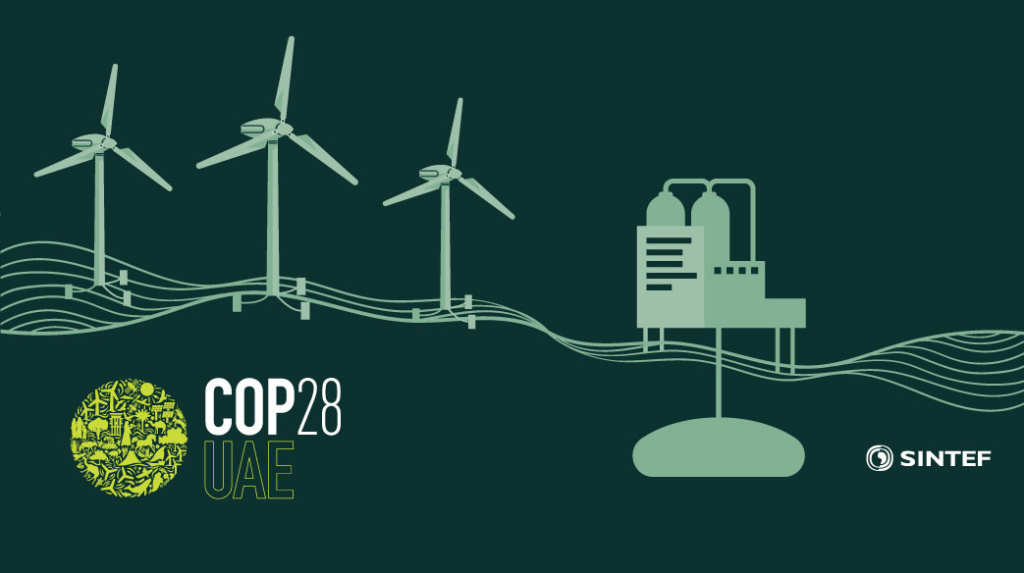Methane emissions, comprising 10% of greenhouse gases in the EU, Norway, and the USA, have increased due to agriculture, waste, and fossil fuels.
The “Global Methane Pledge” from COP26 sets a goal for a 30% reduction in global methane emissions by 2030. While existing technologies can reduce emissions from the oil and gas industry, this blog emphasizes the challenge of addressing emissions from low-concentration sources, requiring innovative solutions in the early stages of development.
COP28-recommendations to curb methane emission
- The EU’s agreement to reduce methane emissions in the EU and globally is a significant step in the right direction. It requires oil, coal, and gas suppliers to measure and monitor methane emissions associated with production and distribution and implement measures to reduce emissions. Similar arrangements should be advocated globally, possibly in collaboration with the Oil and Gas Climate Initiative (OGCI). The vision should be zero emissions from technical installations.
- The main challenge with technologies removing methane from low-concentration sources is moving large amounts of air to remove a meaningful amount of methane. It is still an open question whether removing methane from these low-concentration sources is a sustainable solution. Therefore, SINTEF recommends focusing research on the potential for removing methane from low-concentration sources and identifying where and when it makes sense as a global climate solution.
Find out more about SINTEF’s research on climate and environment.
The problem
Atmospheric methane is the second most important greenhouse gas after CO₂ . The sixth assessment report from the IPCC found that methane emissions from all human activities contributed approximately 0.5°C to the current observed warming.
Methane has an atmospheric lifetime of around 10-12 years, and its Global Warming Potential (GWP) is equivalent to 30 (over a 100-year period) to 83 (over a 20-year period) times that of CO₂.
Methane emissions account for about 10% of greenhouse gas emissions in the EU and Norway, with a similar percentage for the USA (measured over a 100-year period). The emissions have increased, primarily driven by agricultural activities, waste, and the extraction and use of fossil fuels. In Europe, the majority of methane emissions come from agriculture (57% in Norway, 46% in the EU, and 26% in the USA), while globally, oil and gas operations are a major source of methane emissions (30% in the USA).
Methane emissions can lead to a situation where natural gas has a worse greenhouse gas accounting than coal.
Methane emissions from oil and gas operations can originate from various sources, distinguishing between conventional reserves and shale gas/oil sands. Throughout the value chain, there are methane emissions, partly due to leakage and partly due to technology choices (valves operating with hydraulic solutions are designed to release methane).
The U.S. Environmental Protection Agency (EPA) has investigated various sources related to methane leakage from technical installations, revealing numerous technologies contributing to emissions.
A UN Environment Programme report on methane shows that cutting methane emissions by 45% today can reduce warming by 0.28°C by the mid-century and keep the world on track toward the goal of less than 2°C global warming.
Methane emissions also arise from coal mining (about 5% in the EU and the USA) and landfill gas from waste (anaerobic digestion, 18% in the EU and Norway, and 15% in the USA). While global attention is on methane emissions from the oil and gas industry and agriculture (especially meat consumption), a significant portion comes from rice cultivation. Rice provides half of the world’s population with staple food, but rice cultivation is also the source of half of the world’s emissions from cultivated land. Another increasingly important source of methane emissions is wetlands. In methane sources like rice cultivation, wetlands, and waste disposal, there are also significant emissions of another potent greenhouse gas: nitrous oxide.

The solution
The “Global Methane Pledge” (GMP) initiated by the USA and the EU during COP26 was crucial in highlighting the importance of reducing methane emissions. The GMP is based on a (voluntary) goal to contribute to a 30% reduction in global methane emissions from 2020 levels by 2030.
Now is the time to raise ambitions and discuss national goals for methane emission reductions.
Methane emissions from the oil and gas industry can be significantly reduced with current technologies. The IEA states that 40% of methane emissions can be reduced without net costs using known, existing technologies. For example, Norwegian oil and gas production has very low methane leakage compared to other countries. This could be due to Norway’s methane tax imposed on oil and gas producers and a stringent Health, Safety, and Environment (HSE) regime, especially offshore. This leads to methane emission reduction through investments in technical equipment being cheaper than the cost of emissions. The EPA also provides technology recommendations for reducing emissions at each stage of the natural gas value chain.
While reducing methane emissions from the oil and gas industry is the low-hanging fruit achievable with existing technology, we must also remove methane from relatively low-concentration sources to achieve reduction levels that can have a significant impact on the climate. It is very challenging to remove methane from low-concentration sources like livestock and the vicinity of rice fields, thawing tundra, wetlands, and even the air. The concentration of methane in these areas is 10-200 times lower than CO₂ in the air, making direct air capture (DAC) of methane demanding.
Technologies are being developed to convert methane from these low-concentration sources into CO₂ and, in some cases, convert both methane and nitrous oxide into methanol. These technologies are in early development stages but show promise. The main challenge to succeeding with this technology is moving large amounts of air, which is energy-intensive, to remove a meaningful amount of methane.










Comments
No comments yet. Be the first to comment!